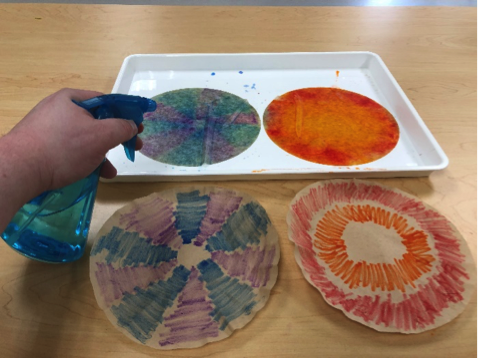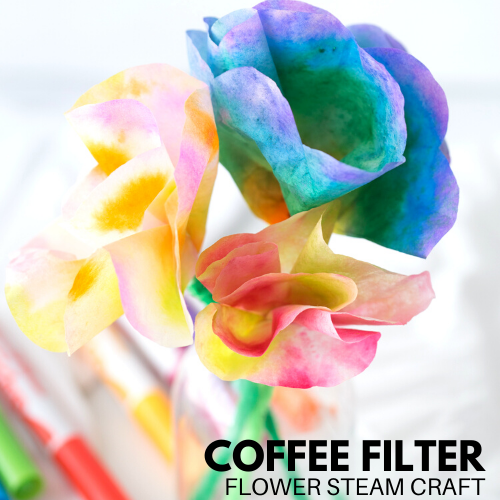By Garen Robie
 At Ignite Studio we pride ourselves on being a STEAM—Science, Technology, Engineering, ART, and Math—oriented makerspace. To us, science and art go hand in hand. As Raymond Chandler wrote: “There are two kinds of truth: the truth that lights the way and the truth that warms the heart. The first of these is science, and the second is art. Neither is independent of the other or more important than the other.” Today we’ll be making coffee filter flowers using supplies you can find at home and learning about the science of solubility.
At Ignite Studio we pride ourselves on being a STEAM—Science, Technology, Engineering, ART, and Math—oriented makerspace. To us, science and art go hand in hand. As Raymond Chandler wrote: “There are two kinds of truth: the truth that lights the way and the truth that warms the heart. The first of these is science, and the second is art. Neither is independent of the other or more important than the other.” Today we’ll be making coffee filter flowers using supplies you can find at home and learning about the science of solubility.
With Spring in full swing, a seasonal floral project that demonstrates scientific concepts is an all around win!
Supplies

- Coffee filters (Flat bottom brown or white)
- Washable markers
- Nonabsorbent surface: plastic bag or baking sheet (I used a plastic drip tray.)
- Scissors
- Spray bottle for water
- Pipe cleaners
- Hair dryer (optional)
Instructions
The following instructions have been adapted from Little Bins for Little Hands. Click on over to see lovely pictures of their coffee filter flowers!

Step 1: Using your washable markers, color all over your coffee filter. You may choose to draw shapes or patterns. Maybe you want to make a rainbow flower!
Step 2: Set your colored coffee filters on your nonabsorbent surface and mist with water from your spray bottle. What do you notice? Do you see colors blending together? Do you notice any colors swirling?
Step 3 (optional): Blow dry your coffee filter flowers for speedier drying.
Step 4: Finally, when your coffee filter flowers are dry, fold them and tape the bottoms to hold your bloom together. Cut the edges for a rounded blossom. Finish by wrapping a pipe cleaner around the tape and down, creating a stem for your flower.
Science with Coffee Filters
The blending of the colors when sprayed with water is where we find our STEAM terms today: soluble, solute, and solvent. When something is “soluble,” it will dissolve when a liquid is added. In the case of the coffee filters, the washable marker ink is the “solute”—the dissolvable material—and the water is the “solvent”—the substance in which the solute dissolves. This happens because molecules in both the water and the ink are attracted to each other.
If you’re interested in more STEAM projects, check out Little Bins for Little Hands’ list of easy STEAM activities for kids.
Share your coffee filter flower designs with us on Facebook, and join us next Monday for another virtual drop in!






